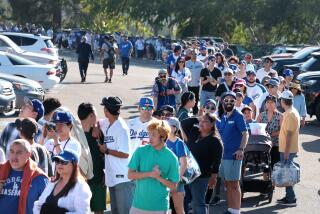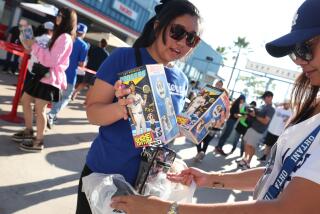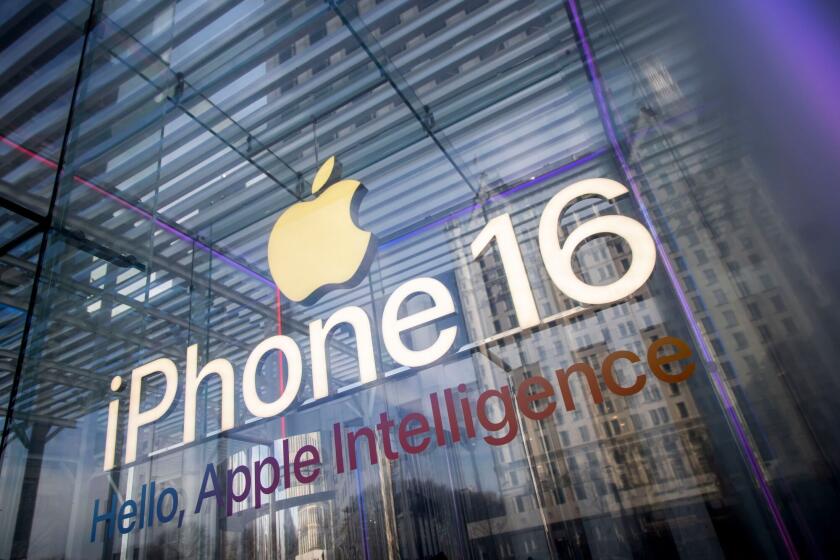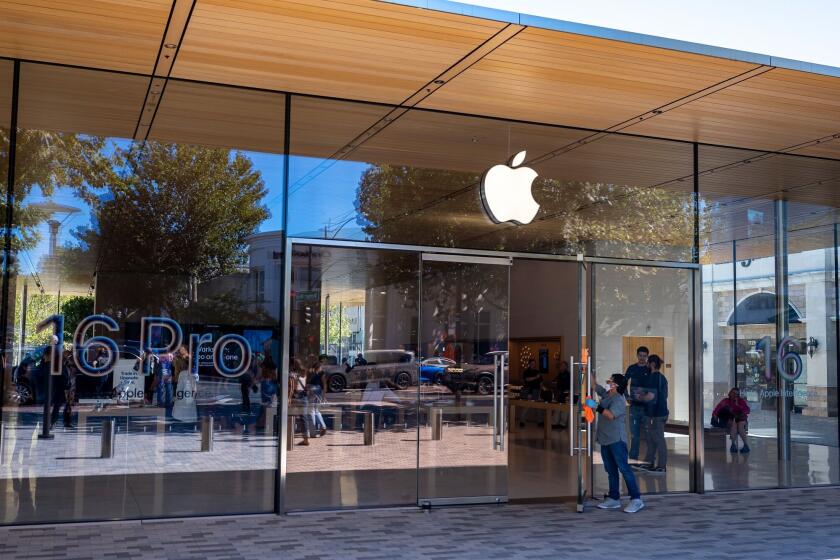Engineer goes from tech bubble to tech bobbleheads
- Share via
The gig: Bobblehead dolls, once the detritus of minor-league baseball games, have become big business. Nodding likenesses of sports stars, celebrities and regular folks such as co-workers and spouses are turning up everywhere.
Enter Tan Tseng, an immigrant from Vietnam who had already racked up more than a decade’s experience as an engineer in Silicon Valley and was casting about for an idea for a business that would make use of his engineering skills while allowing him to be his own boss.
His unlikely choice of designing and selling custom-made bobbleheads was spurred by his determination that his high-tech skills would prove useful in creating hyper-realistic figurines that would be a hit with buyers looking for, well, whatever it is that bobblehead buyers are looking for.
Six years later, HeadBobble.com is running along at a profit and selling 30,000 bobbleheads a year. The San Jose company employs five people in the U.S. (mainly doing design, sales and marketing) and 50 in China, where the figurines are produced.
Now, Tseng is setting his sights on an even higher-tech production process that he says will take bobblehead realism where no bobblehead has gone before.
Personal: Lives in Redwood City, Calif., with his wife and 10-year-old son. Reads books on 3-D technology in his spare time. Tseng used to enjoy gardening as a hobby, but running his own firm leaves him little time for that now.
Background: Tseng, 47, landed in the U.S. almost 30 years ago when his parents fled Vietnam after the fall of the U.S.-backed regime. Armed with an engineering degree from San Francisco State, Tseng was hired by Intel Corp. in 1984, working as a systems engineer. As the millennium approached, he had caught that most pervasive of Silicon Valley ailments: the start-up bug. In 1999, he launched a company producing IC verification software and within three years employed 30 engineers. Then the collapse of the Internet bubble caught up with him. Funding dried up, and so did his business.
Be the boss: Despite his initial setback, Tseng was determined to be his own boss. “I knew every working-class person must move up the ladder in their careers, either in a management position or by starting their own company,” he says. “I picked the latter.”
Why bobbleheads: Tseng wanted to have a bobblehead doll made of his son but wasn’t happy with what he found on the market, so he decided to start his own company.
The bobble biz: Instead of hand-carving his bobbleheads like many of his competitors, Tseng uses a computerized system that scans photos of the subject and then feeds the information to a machine that carves the likeness in wax. The wax head is then used to create a mold for a polyresin bobblehead, which is then hand-painted. Tseng’s bobbleheads sell for $85 to $95 each.
“As with many other companies, getting the business off the ground was the biggest hurdle,” Tseng recalls. “While selling my products at the mall was a success from a marketing and research standpoint, the overhead barely covered my cost. It was also a challenge balancing the best possible product, in terms of likeness of my customers, with an affordable price. I needed to find ways to cut my overhead without sacrificing the quality. . . . The solution was moving online.”
What’s next? Tseng is developing an even more realistic bobblehead using an improved 3-D technology that he plans to have on sale in March through a second online site called Gobobble.com. Tseng says the new bobbleheads are more realistic because instead of being hand-painted, the coloring is applied by computer using a photograph of the subject.
--






